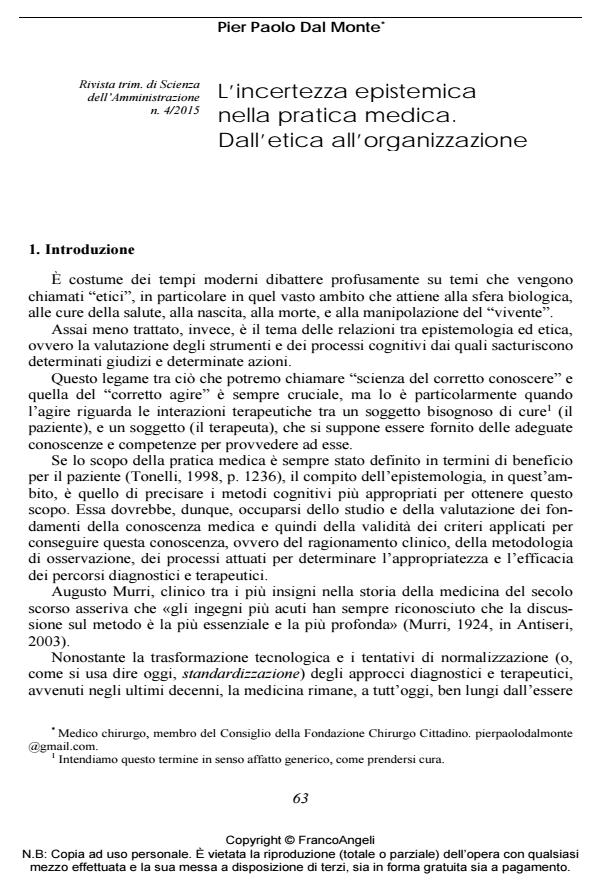Epistemic Uncertainty in Medical Practice. From Ethics to Organization
Journal title RIVISTA TRIMESTRALE DI SCIENZA DELL’AMMINISTRAZIONE
Author/s Pier paolo Dal Monte
Publishing Year 2016 Issue 2015/4
Language Italian Pages 44 P. 63-106 File size 336 KB
DOI 10.3280/SA2015-004003
DOI is like a bar code for intellectual property: to have more infomation
click here
Below, you can see the article first page
If you want to buy this article in PDF format, you can do it, following the instructions to buy download credits

FrancoAngeli is member of Publishers International Linking Association, Inc (PILA), a not-for-profit association which run the CrossRef service enabling links to and from online scholarly content.
Even if it is a modern habit to discuss ethics and bioethics profusely, we think that the relationship between ethics and epistemology is not always adequately considered. The connection between the "science of proper doing" and the "science of proper knowing" is a crucial aspect of the therapeutic interaction. Since the purpose of medical practice has always been defined as pursuit of the good of the patient, the focal interest of epistemology in this context must be to assess the right method to achieve the appropriate knowledge for this purpose. Medicine is not a hard science and it is always necessary to encourage the "epistemic doubt", and to persistently enquire about "correct knowing", not only because a flaw or a lack of knowledge may be harmful to patients (thus ethically deplorable), but, more importantly, because flawed methodology could undermine the very basis of knowledge. This essay tries to stimulate the epistemic doubt about methodology per se. We start with an etymological assessment of the terms "epistemology" and "ethics" in order to establish their proper use, then we expound the investigation of the epistemic tools we use to know the world around us and, in the last paragraphs we try to assess the methods of knowledge specifically adopted in the medical field.
Keywords: Epistemology, ethics, medicine, medical practice, evidence based medicine
Pier paolo Dal Monte, L’incertezza epistemica nella pratica medica. Dall’etica all’organizzazione in "RIVISTA TRIMESTRALE DI SCIENZA DELL’AMMINISTRAZIONE" 4/2015, pp 63-106, DOI: 10.3280/SA2015-004003